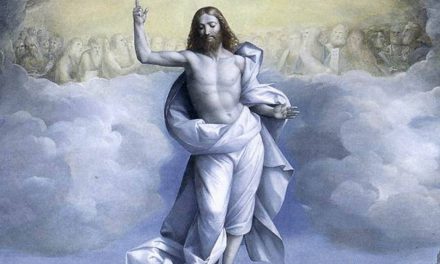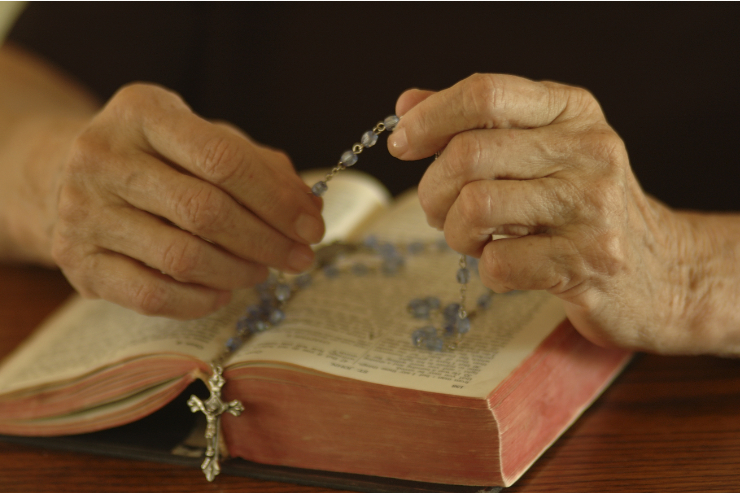In today’s Gospel, we have a short account of Jesus’ call of Matthew by the man himself. He only spends a few verses on what was the pivotal moment of his life. He mentions simply that he was a tax collector, and that Jesus called him out of his daily work to a life of discipleship. Finishing up the brief account by calling attention to his unworthiness, he makes sure to include in his story that the Pharisees grouped his ilk with sinners.
I cannot hear the account of the calling of Matthew without thinking of the famous painting by Caravaggio, still visible in the chapel for which it was painted at the end of the 16th century. In the church of San Luigi dei Francesi in Rome, Caravaggio painted a cycle of three paintings: the Inspiration of Saint Matthew, the Martyrdom of Saint Matthew, and the Calling of Saint Matthew.
The painting is rich with symbolism, and I highly recommend using it as an aid for mental prayer and meditation. Notice that the men gathered around the customs post appear to have stepped out of Caravaggio’s time, whereas Peter and Jesus are dressed in biblical dress. It is a reminder that the Gospel message – and call to discipleship – is timeless. Peter stands between the viewer and Jesus, a reminder that we do not come to Jesus except through the Church.
The hand that calls Matthew may look familiar. It is the same hand that reaches out on the Sistine Chapel ceiling towards God the Father in Michelangelo’s Creation of Adam. It is the hand of Adam. Jesus, the new Adam, calls Matthew to a new life, a new creation. The life of God – grace – that was breathed into the lungs of the original Adam was forfeited by sin. Jesus, the new Adam, calls Matthew out of a life of sin back into a life of grace. We know the rest of Matthew’s story – that breath will be breathed on him in the Upper Room after the resurrection (John 20:22).
But the rest of his story is not a forgone conclusion in this painting. In fact, this painting depicts a particular moment – the seconds prior to Matthew’s decision. It is a time of drama and uncertainty. What will Matthew say? Jesus reaches out, beckoning Matthew to follow. Jesus’ feet are turned, ready to go: the call is given and must be responded to – not later, not in a year, but now. The viewer is experiencing a moment in time- that dramatic call- and the answer is not immediately clear. Will Matthew respond?
The painting is not ultimately about Matthew, but about you. Will you respond?
In fact, it is not even clear which person sitting at the table is Matthew. Some say he is the man in the middle, pointing at himself. “Me, Lord?” But what if he is the man at the far end of the table, consumed in his money, and the man in the middle is actually pointing to him? “Matthew? You want Matthew?”
Who am I in the painting? How will I respond?
Jesus comes to Matthew in the midst of his every day work, in the grittiness of life. It is the same for us. Jesus is coming to call us to holiness – right in the midst of the grittiness and life. He is calling you today. His feet are poised, ready to go out on mission. Do we recognize him? Do we have the courage to follow?














